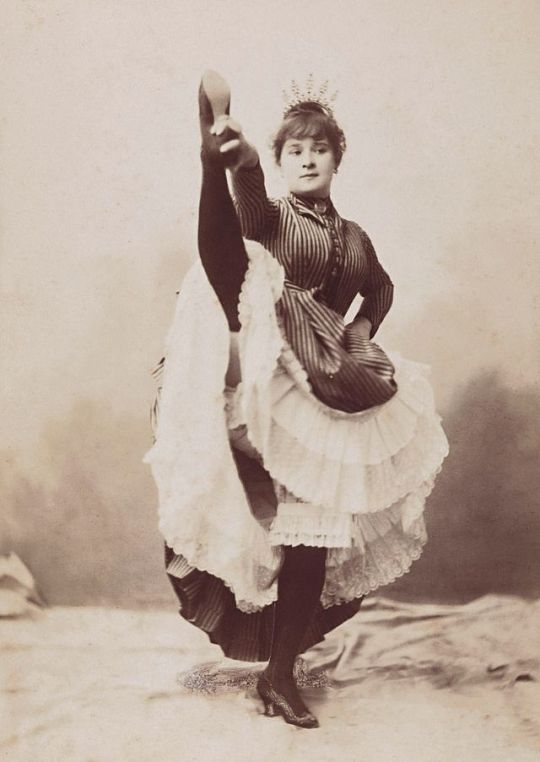#La Goulu
Text
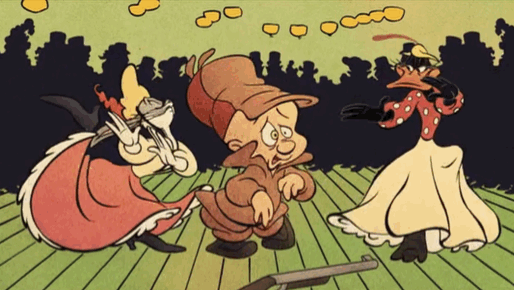
Can Can Do “Looney Tunes: Back In Action” (2003)
#00s#warner bros pictures#hybrid film#warner bros animation#looney tunes#gif#bugs bunny#elmer fudd#daffy duck#drag#Moulin Rouge La Goulue#parody#toulouse lautrec#character designs#cabaret#joe dante#eric goldberg
131 notes
·
View notes
Photo

Henri de Toulouse-Lautrec (1864-1901, French) ~ La Goulue at the Moulin Rouge, 1891-92
[Source: moma.org]
116 notes
·
View notes
Text
18 portraits de Louise Weber, La Goulue, reine de Montmartre au 19ème siècle
Nouvel article publié sur https://www.2tout2rien.fr/18-portraits-de-louise-weber-la-goulue/
18 portraits de Louise Weber, La Goulue, reine de Montmartre au 19ème siècle

#19eme siecle#cabaret#cancan#danse#danseuse#La Goulue#Louise Weber#Montmartre#moulin rouge#noir et blanc#paris#portrait#vintage#people
2 notes
·
View notes
Text
The Rise and Fall of La Goulue, Queen of Montmartre
The Rise and Fall of La Goulue, Queen of Montmartre
“La Goulue” (“The Glutton”) was the professional name of Parisian dancer Louise Weber (1866-1929) earned from her comical habit of snatching up drinks off of people’s tables and guzzling them during her performances.
The daughter of a Jewish laundress, she began her working life as her mother’s assistant, before getting the bright idea to “borrow” some of the more choice women’s wear as her…

View On WordPress
#cabaret#cafe#can-can#dancer#glutton#gourmand#kicker#La Goulue#Montmartre#Moulin-Rouge#music hall#Paris
2 notes
·
View notes
Text
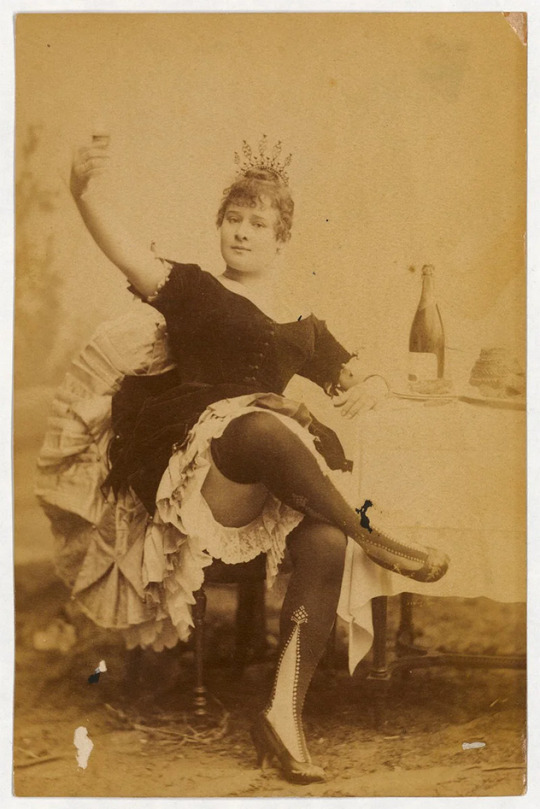
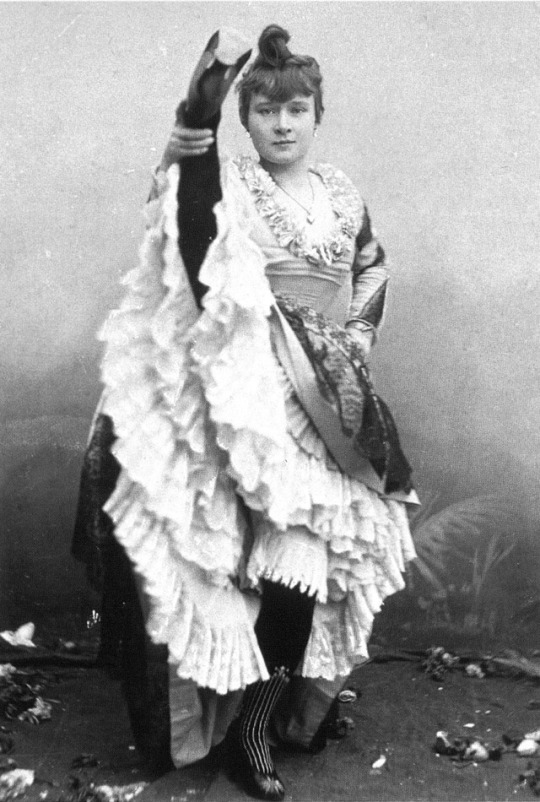

La Goulue (Photos: 1885-90)
Louise Weber, born on July 12, 1866, was a pivotal figure in the realm of can-can. The dance style gained immense popularity, particularly in Paris during the late 19th century. Louise, better known as La Goulue, quickly became an iconic figure of her time.
La Goulue (The Glutton) earned her stagename when she "dried the bottoms of glasses in cabarets." This audacious behavior became synonymous with her fame, contributing to her larger-than-life persona. Her vibrant personality shone both on and off the stage, captivating audiences with her performances filled with enthusiasm and charme.
Legend has it that during a wild performance, La Goulue caught sight of the Prince of Wales nestled between two wheels, as he had come incognito to enjoy the evening at the Moulin Rouge. She allegedly called out: "Are you paying for the champagne? Is it you who invites or is it your mother who treats?"
Her style of fashion was characterized by flamboyant outfits, featuring voluminous petticoats, feathery embellishments, and captivating corsets. She had perfected her leg kicks to such an extent that she could score with calculated glimpses: The insatiable dancer had embroidered a small red heart into the crotch of her slip, which became a sensation and a coveted reward for the gentlemen of her choice.
One can only imagine the scandals, buzz and gossip that surrounded her during the Belle Époque in Paris.
#La Goulue#Louise Weber#19th century#Can Can#Moulin Rouge#Belle Époque#photography#early photography#1880s#1890s#victorian#victorian era#Miss Cromwell
0 notes
Text
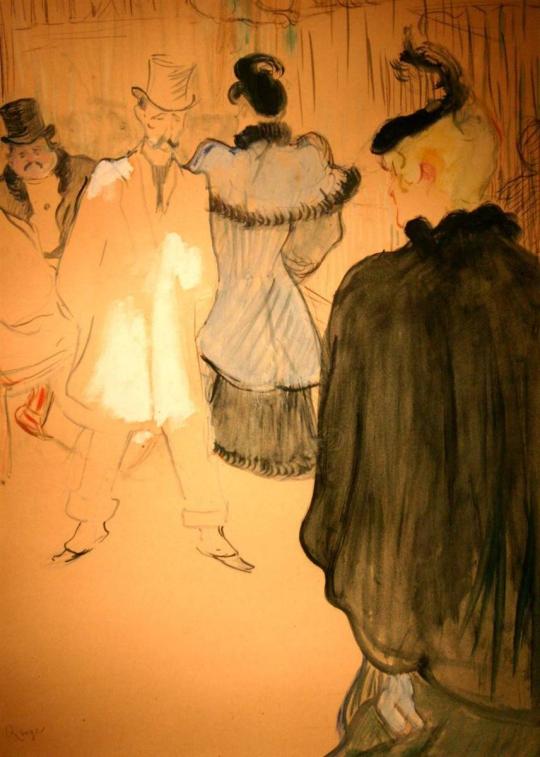
La Goulue and Paul Lescau by Henri de Toulouse-Lautrec (1864 - 1901)
#art#art history#artwork#culture#history#museums#painting#vintage#art nouveau#henri de toulouse lautrec
121 notes
·
View notes
Text

Henri de Toulouse-Lautrec La Goulue. 1891. Colored lithograph: 170 × 118 cm (67 × 46 in).
#henri de toulouse lautrec#culture#vintage#history#moulin rouge#art nouveau#1890s#art history#graphic design#retro#posters#art#dance#beauty#lithograph#19th century#post impressionism#nostalgia#paris#typography
78 notes
·
View notes
Text




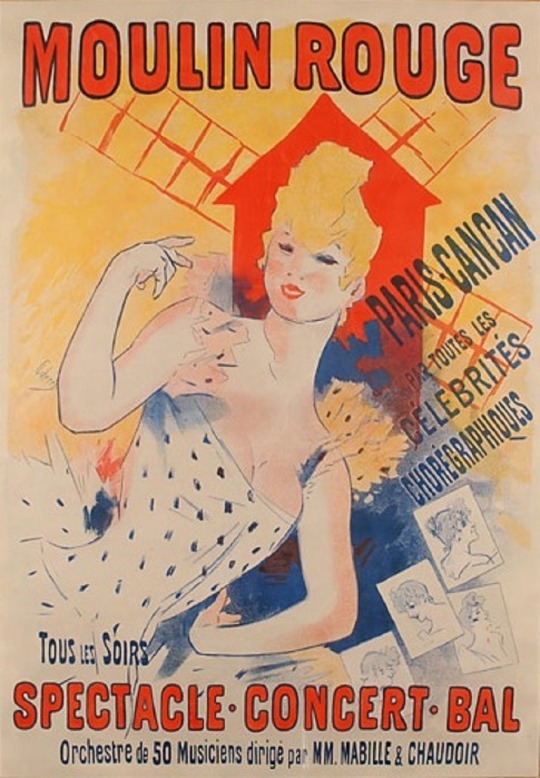

The old Moulin Rouge, before the fire of 1915.
Moulin Rouge postcard, 1936
Henri de Toulouse-Lautrec with Tremolada and Jules Chéret's 1889 poster, Bal du Moulin Rouge, Place Blanche, ca. 1890
Jules Chéret, 1889 poster, Bal du Moulin Rouge
Jules Chéret, Moulin Rouge Poster, 1890
Henri de Toulouse-Lautrec, Moulin Rouge: La Goulue, 1891
#moulin rouge#paris#france#french history#French icon#toulouse lautrec#nightclubs#iconic#paris france#aesthetic#jules cheret#commercial art#graphic art#graphic artists#graphic designer#french art#french artist#french painter#french painting#french beauty#beauty#modern art#art history#aesthetictumblr#tumblraesthetic#tumblrpic#tumblrpictures#tumblr art#tumblrstyle#artists on tumblr
45 notes
·
View notes
Text
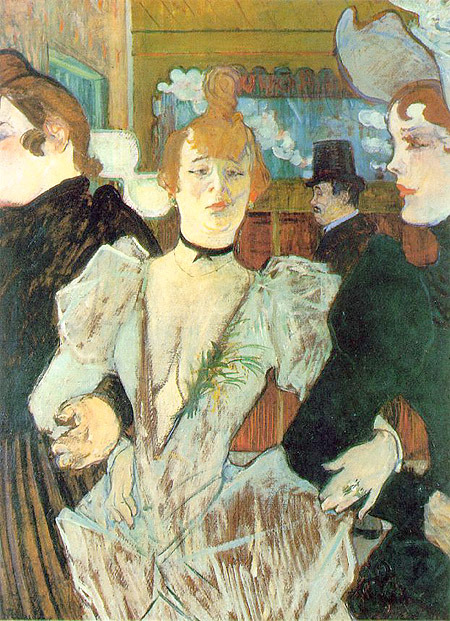
Henri de Toulouse-Lautrec (1864-1901)
"La Goulue Arriving at the Moulin Rouge with Two Women" (1892)
- La Goulue, actually called Louise Weber (1870-1929), was the most successful can-can dancer of her time. She appeared at the Moulin de la Galette, the Alcazar, the Elysée-Montmartre, the Jardin de Paris, and later especially at the Moulin Rouge, frequently with Valentin the Contortionist, her partner in the quadrille. She was given her nickname as a result of her uncontrolled appetite (goulue = greedy).
34 notes
·
View notes
Text

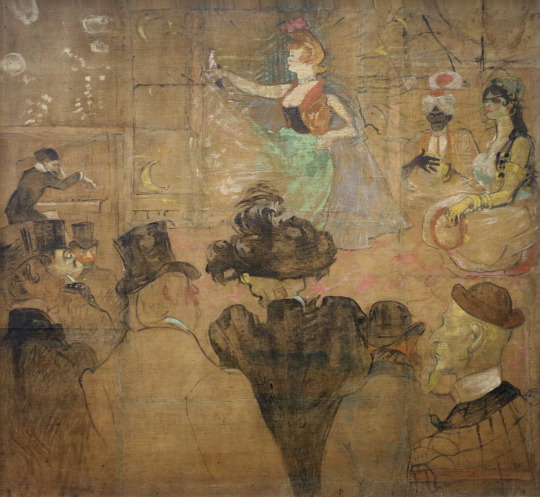
Henri de Toulouse-Lautrec - Panels for the Goulue barracks, at the Foire du Trône in Paris. Depicting a.o. La Goulue, Jane Avril and Oscar Wilde at the Moulin Rouge in 1895.
47 notes
·
View notes
Text

Tombe de Louise Weber dite La Goulue "créatrice du French Cancan" (1866-1929) au Cimetière de Montmartre, Paris, février 2024.
4 notes
·
View notes
Text

Intro
XYX – Pan de Muerto
Hesitation / Indecision
HOUSEHOLD NAME – Indoctrination
SUB VERSE – Science of Fear
FALL OF SAIGON – Visions
GÖTTERFLIES – Hippie
Tics & Patterns
ANONYMOUS CARPETTING – Nervous Habits
KOSMONAUTENTRAUM – Kosmonautentraum No. 7
BABY BOOM – Intensive Care
LES GOULUES – Les Poseurs
Love Left Dangling
STARE KITS – Strength Accumulate
GRAZIA – Cheap
LORA LOGIC – Wonderful Offer
MISSY X – Black Sabbath
Trapped in One Way
THE PORTAGE – Hands
DOT DASH – Slide
ELEMENTS OF STYLE – Electricity
PARA-PHRASE – Su-De-Ni!?
LA STRADA – On
Outro
VIVA LA MUERTE – Bury Them With Their Names
4 notes
·
View notes
Photo

José Ferrer and Zsa Zsa Gabor in Moulin Rouge (John Huston, 1952)
Cast: José Ferrer, Colette Marchand, Zsa Zsa Gabor, Suzanne Flon, Claude Nollier, Katherine Kath, Muriel Smith, Theodore Bikel, Peter Cushing, Christopher Lee. Screenplay: Anthony Veiller, John Huston, based on a novel by Pierre La Mure. Cinematography: Oswald Morris. Production design: Marcel Vertès. Film editing: Ralph Kemplen. Music: Georges Auric.
If Moulin Rouge had a screenplay worthy of its visuals, it would be a classic. As it is, it's still worth seeing, thanks to a stellar effort to bring to life Toulouse-Lautrec's paintings and sketches of Parisian nightlife in the 1890s. The screenplay, by Anthony Veiller and director Huston, is based on a novel by Pierre La Mure, the rights to which José Ferrer had purchased with a view to playing Lautrec. He does so capably, subjecting himself to some real physical pain: Ferrer was 5-foot-10 and Lautrec was at least a foot shorter, owing to a childhood accident that shattered both his legs, so Ferrer performed many scenes on his knees, sometimes with an apparatus that concealed his lower legs from the camera. But that is one of the least interesting things about the movie, as is the rather conventional story of the struggles of a self-hating, alcoholic artist. What distinguishes the film is the extraordinary production design and art direction of Marcel Vertès and Paul Sheriff, and the dazzling Technicolor cinematography of Oswald Morris. Vertès and Sheriff won Oscars for their work, but Morris shockingly went unnominated. The most plausible theory for that oversight is that Sheriff clashed with the Technicolor consultants over his desire for a palette that reproduced the colors of Lautrec's art: The Technicolor corporation was notoriously persnickety about maintaining control over the way its process was used. It's possible that the cinematography branch wanted to avoid future hassles with Technicolor by denying Morris the nomination. (Ironically, one of the more interesting incidents from Lautrec's life depicted in the film involves his clashes with the lithographer over the colors used in posters made from his work.) The extraordinary beauty of the film and some lively dance sequences that bring to life performers such as La Goulue (Katherine Kath) and Chocolat (Rupert John) make it memorable. There are also good performances from Colette Marchand as Marie Charlet and Suzanne Flon as Myriamme Hayam. And less impressive work from Zsa Zsa Gabor, playing herself more than Jane Avril, and lipsynching poorly to Muriel Smith's voice in two songs by Georges Auric.
7 notes
·
View notes
Text

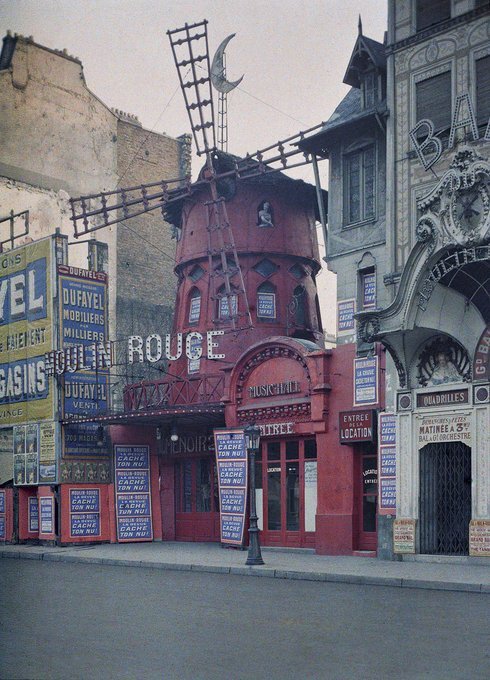
Moulin Rouge - La Goulue (1891) by Henri de Toulouse-Lautrec
Autochrome picture of Le Moulin Rouge (1914) by Stéphane Passet
"Moulin Rouge, one of the symbols of Paris, became what it became largely thanks to the hand of the young artist. In 1889, when the cabaret was just opening, Toulouse-Lautrec was commissioned to create posters for this event. He created bold, in many ways scandalous and recognizable posters, which, posted throughout Paris, became a local sensation and attracted attention both to the artist himself and to the dancer depicted, the inventor of the cancan, La Goulue."
(source)
#Moulin Rouge#La Goulue#1890s#Henri de Toulouse-Lautrec#Miss Cromwell#Monmartre#illustration#poster#art
0 notes
